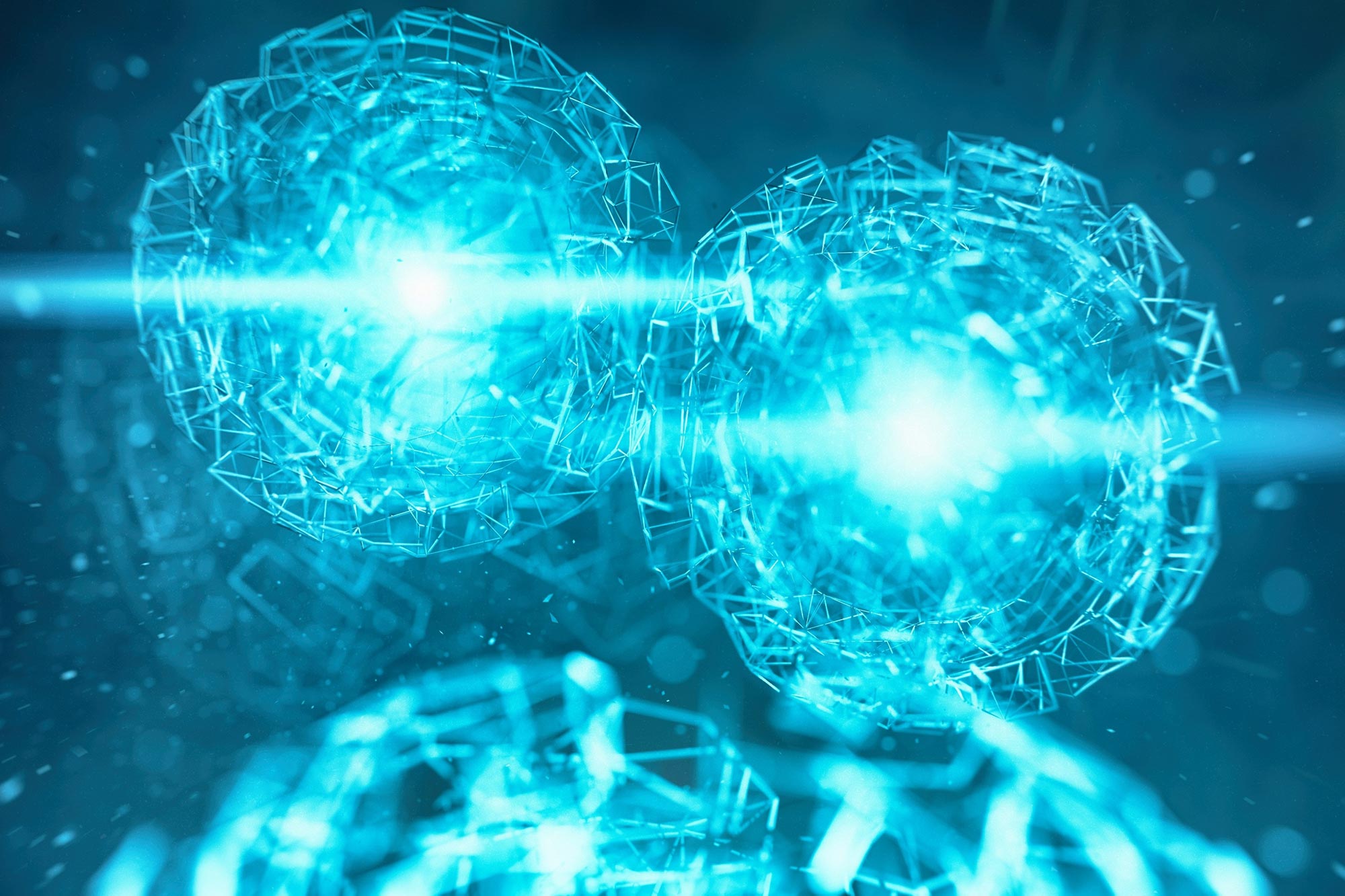Novel connection between two strange quantum phenomena – superposition and entanglement – discovered with implications for ultra-secure cryptography.
A beyond-quantum equivalence principle for superposition and entanglement.
A study funded by the Foundational Questions Institute (FQXi) found a novel link between two strange quantum phenomena – superposition and entanglement – with implications for ultra-secure cryptography.
The physics of the microrealm involves two well-known and bizarre concepts: the first is that, prior to observation, it is impossible to know with certainty the result of a measurement on a particle; rather, the particle exists in a “superposition” that includes many mutually exclusive states. So a particle can be in two or more places at the same time, and you can calculate the probability of finding it in a given place just by looking. The second concerns “entanglement,” the ghostly connection that can unite two objects, no matter how far apart they are physically separated. Quantum theory mathematically describes both superposition and entanglement.
But many physicists believe that the ultimate theory of reality may lie beyond quantum theory. Now a team of physicists and mathematicians have found a new connection between these two strange properties that doesn’t assume quantum theory is correct. Their research study was published in Physical Verification Letters and was selected by the magazine as Editors’ Suggestion.

A novel link between entanglement and superposition has been discovered in any physical theory, confirming that secret key distribution will work in current quantum cryptographic protocols, even if quantum theory is wrong and needs to be replaced by a more fundamental “beyond quantum” theory. Photo credit: Ludovico Lami
“We were very excited to find this new connection, which goes beyond quantum theory, because the connection will also be valid for more exotic theories that have yet to be discovered,” says Ludovico Lami, a member of the physics think tank Foundational Questions Institute , FQXi, and physicists at the University of Ulm, in Germany. “This is also important because it is independent of the mathematical formalism of quantum theory and only uses terms with an immediate operational interpretation,” he adds. Lami co-authored the study with Guillaume Aubrun from the Claude Bernard University Lyon 1 in France, Carlos Palazuelos from the Complutense University of Madrid in Spain and Martin Plávala from the University of Siegen in Germany.
While quantum theory has proved extremely successful since its development a century ago, physicists have struggled to unify it with gravity to create an overarching “theory of everything.” This suggests that quantum theory may not be the last word to describe reality, inspiring physicists to search for a more fundamental framework. But any such ultimate theory must still include superposition, entanglement, and the probabilistic nature of reality, as these features have been confirmed time and time again in laboratory tests. The interpretation of these experiments does not depend on the correctness of quantum theory, notes Lami.
quantum cryptography
There are practical implications too. Quantum entanglement plays a key role in the design of quantum computers — machines that could outperform standard computers at certain tasks — and in quantum cryptographic protocols already in use that exploit quantum rules to enable ultra-secure communication across channels that are theoretically possible are immune against hacking. But if at some point in the future quantum theory has to be replaced by another, more fundamental theory, will we then find that those rules weren’t actually valid, or that cryptographic protocols aren’t as secure as promised?
The problem is that to find this out, you have to analyze superposition and entanglement in terms of a general – and as yet unknown – theory, without using the mathematics of quantum theory. How can you do that? Lami and his colleagues solved this puzzle by examining “general probabilistic theories” instead of quantum theory. The research was supported in part by a grant Lami et al received from the Foundational Questions Institute, FQXi, to study the characteristics and limitations of intelligence in generalized probabilistic theories and to explore how information is represented in abstract classical, quantum, and beyond Quantum” systems.
“This FQXi grant gave me the opportunity to think more deeply about some universal features of information processing in theories beyond quantum mechanics, mathematically modeled by general probability theories,” says Lami. “And the cryptographic primitive example we’re studying, secret key distribution, is one of the simplest tasks to which this formalism can be applied.”
In the new paper, published in the journal Physical Verification Lettersthe team showed that two physical theories show entanglement when combined if and only if they both have local superpositions. This means that entanglement and superposition are equivalent in any physical theory, not just in quantum theory. They also calculated that in systems where this equivalence holds – whether quantum or otherworldly quanta – the laws of the theory can be exploited for ultra-secure encryption. In particular, the team showed that a certain popular quantum cryptography protocol, known as “BB84,” will always work — even if one day the quantum theory turns out to be not entirely correct and needs to be replaced with a more fundamental theory.
“It’s kind of comforting to know that cryptography is really a feature of all non-classical theories and not just a quantum oddity, since many of us believe that the ultimate theory of nature will likely be non-classical,” says Lami. “Even if we should one day find that quantum theory is wrong, we will still know that secret key distribution can, in principle, work.”
Reference: “Entanglement and superposition are equivalent concepts in any physical theory” by Guillaume Aubrun, Ludovico Lami, Carlos Palazuelos and Martin Plávala, April 22, 2022, Physical Verification Letters.
DOI: 10.1103/PhysRevLett.128.160402
This work was supported in part by FQXi’s Intelligence in the Physical World program.

